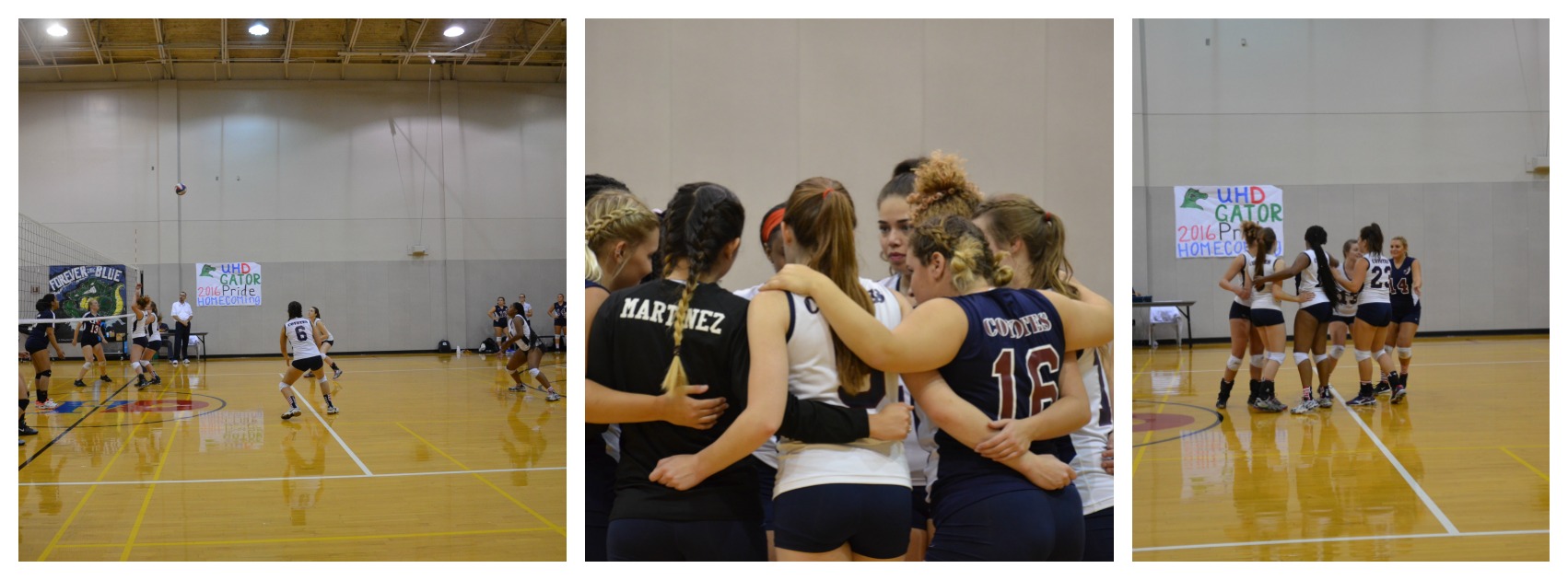By Emily Slater, Copy Editor
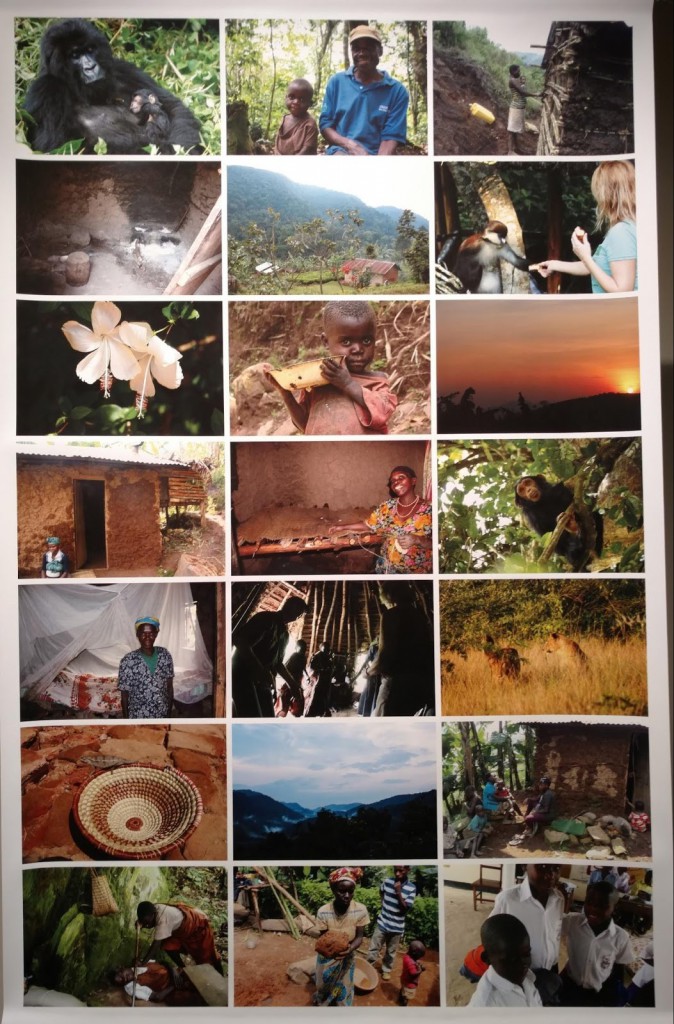 Batwa culture captured in poster collage on display in the LSC-Kingwood Fine Art Gallery. The images on this collage reflect the lives and living conditions of the Batwa. Jan. 25. Photo by Abigail Morar.
Batwa culture captured in poster collage on display in the LSC-Kingwood Fine Art Gallery. The images on this collage reflect the lives and living conditions of the Batwa. Jan. 25. Photo by Abigail Morar.
From her first encounter with the Batwa pygmies of Southwest Uganda in 2014, Wendee Nicole Holtcamp was prompted to uproot her life in Houston and move to Uganda to start Redemption Song Foundation. This foundation is a nonprofit dedicated to bettering the lives of the indigenous people evicted from Bwindi Impenetrable National Park through community development, education, and artisan co-ops, a program in which items made by the tribal peoples are bought and resold, with the income going back into the community development fund.
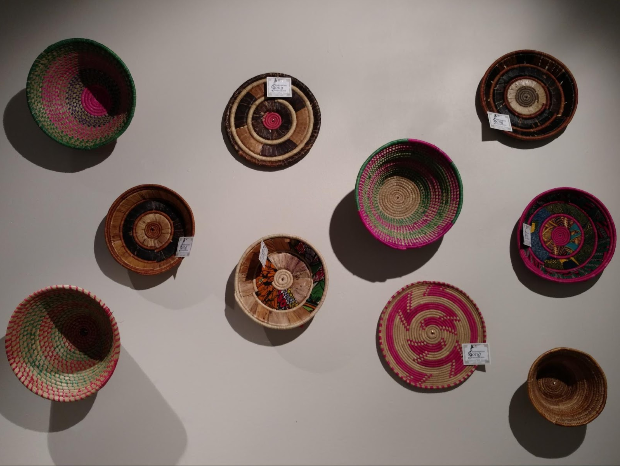 Straw baskets made by the Batwa women placed around the LSC-Kingwood Fine Art Gallery on Jan. 25. The woven baskets are selling at the Edge of Eden and proceeds go towards helping the Batwa pygmies. Photo of Abigail Morar.
Straw baskets made by the Batwa women placed around the LSC-Kingwood Fine Art Gallery on Jan. 25. The woven baskets are selling at the Edge of Eden and proceeds go towards helping the Batwa pygmies. Photo of Abigail Morar.
According to Redemption Song Foundation, “people living near Bwindi Impenetrable Park suffer from some of the most abject poverty in all of Uganda.”
The Batwa are indigenous to what is now Uganda’s Bwindi Impenetrable National Park, created in 1991 in order to save the endangered mountain gorillas that used to dwell in the area. When the national park was established, the Batwa were forced from their home with no compensation, causing extreme poverty and a number of other societal issues within the Batwa community.
“The Edge of Eden” is Lone Star College–Kingwood’s first art show of the spring semester. The many photographs on display are just a few of the 5,000 photographs by Holtcamp which LSC-Kingwood students in Professor Brian Shmaefsky’s Environmental Science 1401 class sorted through for the exhibit. The exhibit also displays two models of Batwa dwellings, contrasting the Batwa’s living conditions before and after being evicted from their home in the amazon, and a short video about Redemption Song and the Batwa pygmies, all created by Shmaefsky’s Environmental Science 1401 classes.
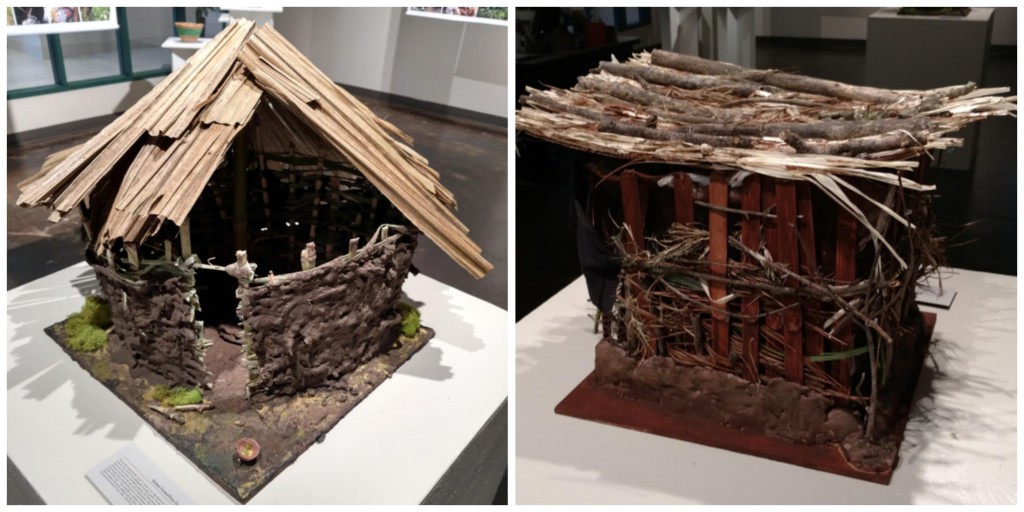 These 1/6th models of the Batwa Forest/Prior Dwelling were constructed by students of the Environmental Science 1401 class in the LSC-Kingwood Fine Art Gallery. The Batwa pygmies took advantage of the Bwindi Impenetrable Forest resources by using grass, palm leaves, bamboo stems, and humus-rich clay to build their houses. Jan. 25, Photos by Abigail Morar.
These 1/6th models of the Batwa Forest/Prior Dwelling were constructed by students of the Environmental Science 1401 class in the LSC-Kingwood Fine Art Gallery. The Batwa pygmies took advantage of the Bwindi Impenetrable Forest resources by using grass, palm leaves, bamboo stems, and humus-rich clay to build their houses. Jan. 25, Photos by Abigail Morar.
According to Shmaefsky, the message he hopes is portrayed by the exhibit is that “everything we do to protect the earth has consequences.”
The exhibit came together by accident after Shmaefsky and Fine Arts Gallery Director Kristine Larson ran into one another at a Redemption Song fundraiser. Shmaefsky saw the exhibit as the perfect opportunity to bring art into his science classes. The integration of art into STEM (science, technology, engineering, and mathematics) education is called STEAM (science, technology, engineering, art/design, and mathematics) education, of which Shmaefsky is an advocate.
The LSC-Kingwood Fine Art Gallery is open Monday throughThursday from 10 a.m. to 3 p.m. and is located in the Performing Arts Center. The last day to explore “The Edge of Eden” is February 7.

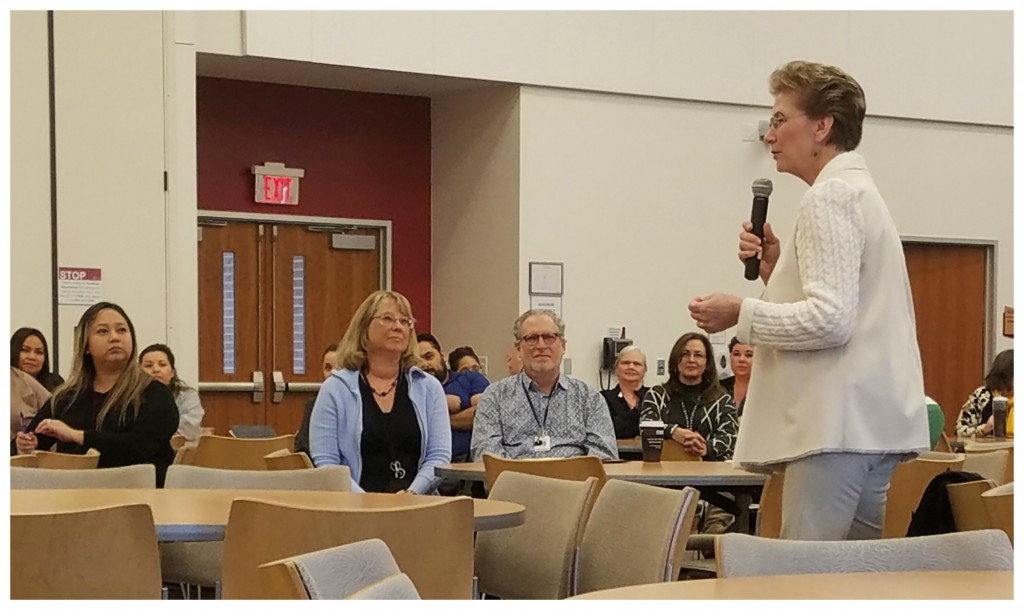
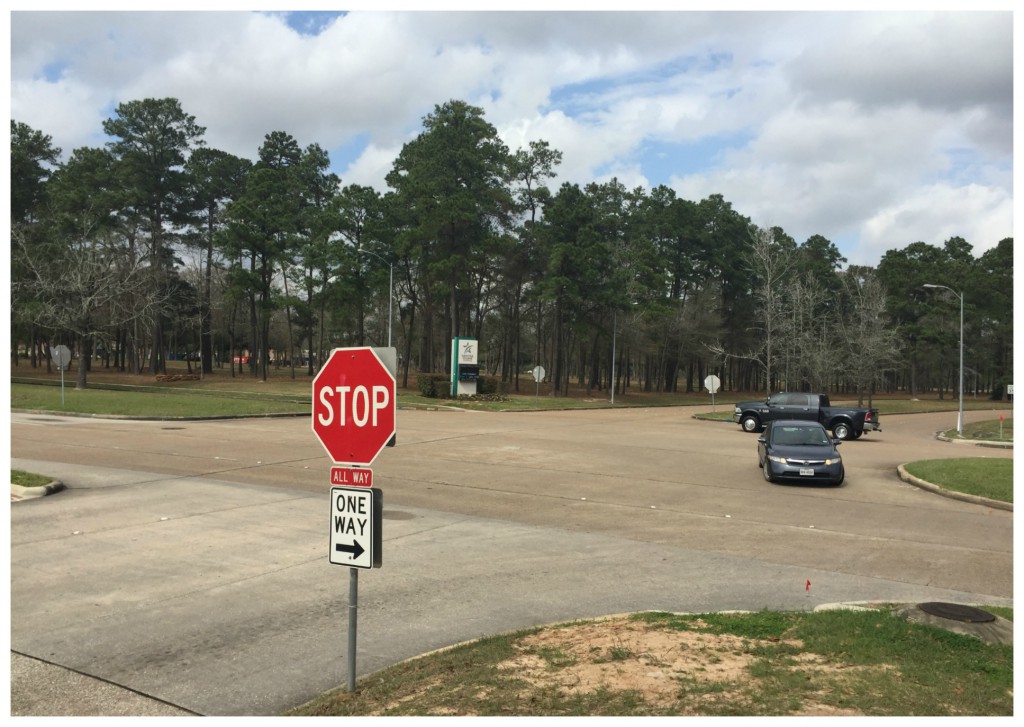 Intersection of Kingwood Place Drive and Kingwood Drive. During the What’s Up Doc? Informational meeting on Feb. 2, a faculty member gave President Katherine Persson the suggestion to put a stoplight in this intersection. Photo by Michelle Lecumberry.
Intersection of Kingwood Place Drive and Kingwood Drive. During the What’s Up Doc? Informational meeting on Feb. 2, a faculty member gave President Katherine Persson the suggestion to put a stoplight in this intersection. Photo by Michelle Lecumberry.







